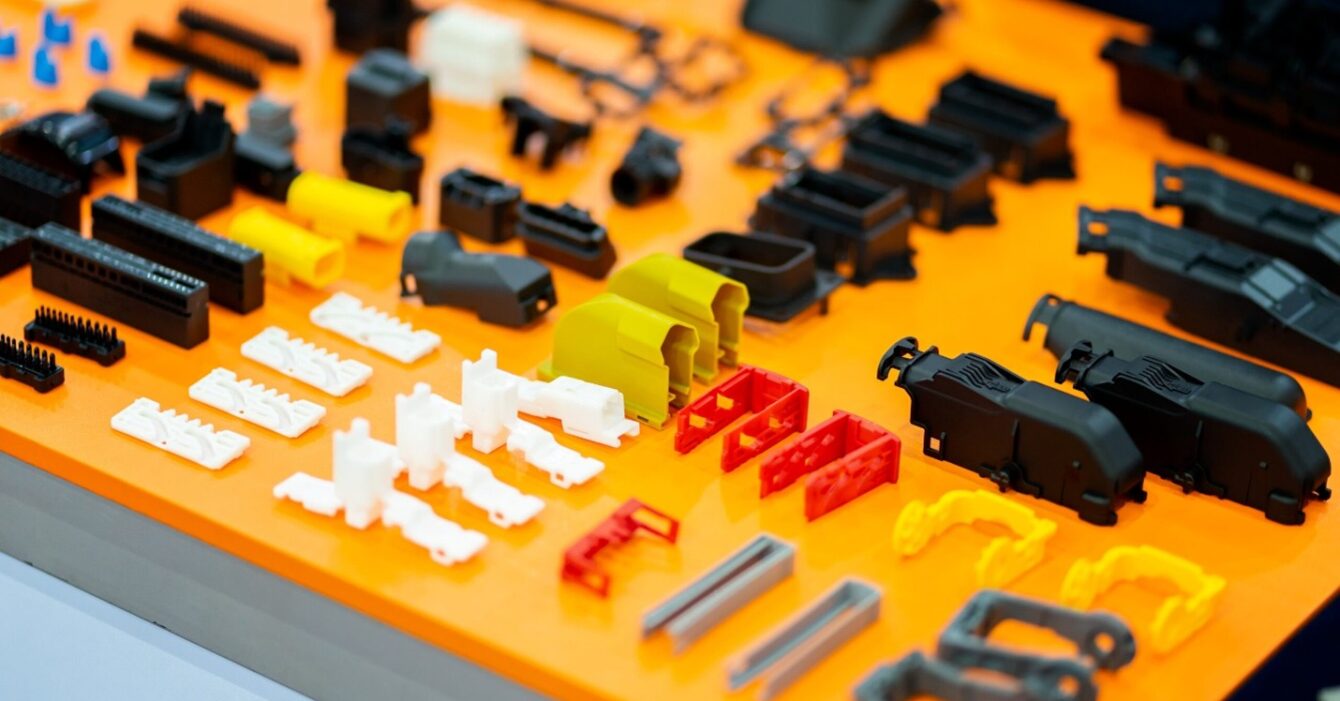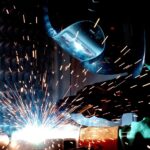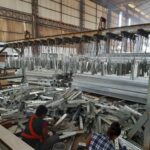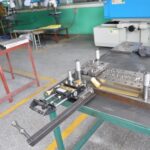Material Selection: Choosing cost-effective materials without compromising quality.
Choosing cost effective material for plastic injection molding is a crucial step in any project since it determines cost efficiency and product performance. Here’s how plastic manufacturing companies can strike the right balance between affordability and quality.
Understanding Material Requirements
However, before going a step further in the process of choosing materials, it is necessary to consider the requirements of the particular project. Strength to weight ratio, tensile strength and impact strength are important since they determine the strength of the plastic components especially in areas that require high strength such as in automobiles or electronics where plastics like ABS or nylon are used.
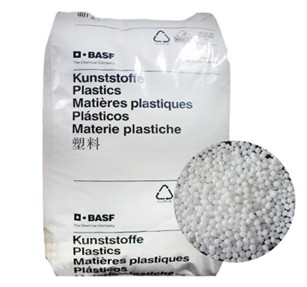
Factors Influencing Material Choice
- Mechanical Properties: Evaluate materials based on their strength, flexibility, and resistance to wear and tear, particularly important for industrial-grade components.
- Chemical Compatibility: Make sure that selected materials are resistant to oils, solvents and other chemicals that are likely to be found in industrial settings.
- Cost Effectiveness: It is important to find the right balance between material costs and performance to ensure that the company is not overburdened with costs while still delivering a high-quality product.
Here are some examples and trade-offs observed:
- Automotive Industry: In automotive manufacturing, plastic components like interior trim panels may include the use of ABS (Acrylonitrile Butadiene Styrene) or PP (Polypropylene). ABS provides very good impact strength and surface appearance while PP is selected for its low cost and low density. The trade-off here is between higher performance and lower material costs, with ABS being more expensive but providing superior aesthetics and durability.
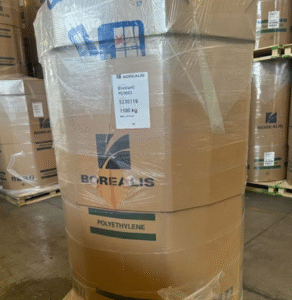
- Consumer Electronics: In casings and structural parts of electronics, material such as PC (Polycarbonate) or ABS are used. PC has good impact strength and heat resistance which makes it ideal for use in product such as casing of laptops. However, ABS, even though it is less resistant, is cheaper and easier to mold, thus making it a good balance between performance and price.
- Medical Devices: For medical applications, such as in orthopedic surgery, materials such as PEEK (Polyether Ether Ketone) are used because of its compatibility with body tissues and its ability to withstand sterilization processes. These materials are more costly but are essential in making medical plastic components safe and durable; highlighting a trade-off between cost and stringent performance requirements.
- Packaging: The two most commonly used materials in the packaging industry are HDPE (High-Density Polyethylene) and LDPE (Low-Density Polyethylene) because they are low cost, flexible, and moisture-proof. However, they may not have the clarity and barrier properties of some of the engineering plastics such as PET (Polyethylene Terephthalate) used in food packaging.
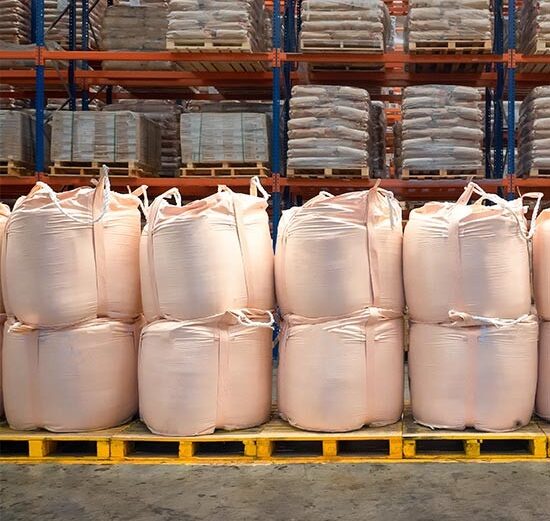
In each of these examples, plastic manufacturing companies must carefully balance specific performance needs against material costs to optimize production in a plastic factory. Understanding these trade-offs helps plastic manufacturing companies make informed decisions, ensuring the efficient production of high-quality plastic components.
Top 5 Dos and Don’ts
Dos:
- Do Conduct Material Testing: Test materials for mechanical properties and chemical resistance to validate performance.
- Do Consider Long-Term Costs: Factor in maintenance, lifecycle, and end-of-life disposal costs.
- Do Consult with Material Suppliers: Leverage their expertise to find cost-effective solutions without compromising quality.
- Do Optimize Part Design: Design parts for manufacturability to minimize material waste and production time.
- Do Stay Updated on Industry Trends: Keep abreast of new materials and technologies that may offer better cost-performance ratios.
Don’ts:
- Don’t Compromise on Quality: Cutting costs at the expense of material quality can lead to failures and costly rework.
- Don’t Overlook Regulatory Compliance: Ensure materials meet industry standards and regulatory requirements.
- Don’t Ignore Material Compatibility: Verify compatibility between materials and processing conditions to avoid defects.
- Don’t Skip Prototype Testing: Prototype testing helps identify material weaknesses early in the design phase.
- Don’t Forget About Sustainability: Balance cost-effectiveness with environmental considerations to enhance long-term value.
Tooling Optimization: Tips for Extending Mold Life and Reducing Maintenance Costs
Tooling Engineers working with plastic manufacturing companies would know how crucial it is to optimize your tooling processes. Efficient injection mold designs can go a long way in increasing the lifespan of your molds and decreasing the amount of maintenance you have to do. It also improves efficiency of a plastic injection molding factory while at the same time improving the quality of output. Here, we’ll delve into some practical tips for tooling optimization, ensuring your molds last longer and require less maintenance. These tips are valuable for any plastic products company looking to stay competitive.
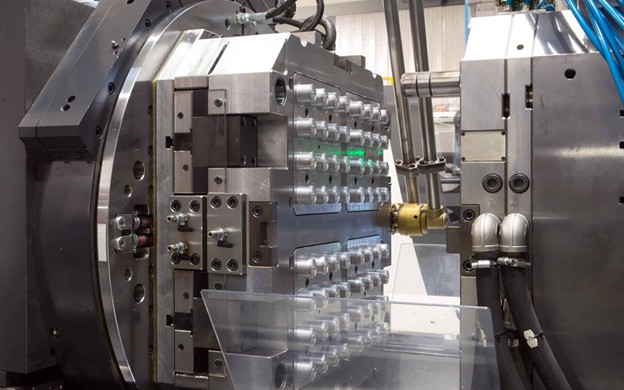
Choose the Right Materials
One of the first steps in tooling optimization is choosing the right materials for the tooling. At injection mold design stage, materials like hardened steel or beryllium-copper alloys are often evaluated and considered for molds because they offer excellent wear resistance and thermal conductivity.
For instance, the automotive industry applies P20 tool steel in the injection mold design because of its excellent machinability and serviceability. This choice minimizes the frequency of repairs and extends the mold’s lifespan, ultimately saving on costs.
Insert molding is a process where metal or plastic inserts are encapsulated in plastic components during the injection molding cycle, enhancing functionality and structural integrity. Insert molds in plastic injection molding are crucial for creating complex and high-precision parts. Common materials for tooling include hardened tool steel, prized for its durability and wear resistance, and beryllium copper, known for its excellent thermal conductivity and faster cooling times.
Regular Maintenance Schedules
It is always important to implement a schedule for the maintenance of molds to avoid minor issues becoming major problems. Some strategies that can be used as part of a proactive maintenance approach in a plastic factory are;
- Routine Inspections and Cleaning: Conduct regular inspections to check for wear, corrosion, and damage in mold components. Use tools like Coordinate Measuring Machines (CMM) to measure dimensional accuracy. Clean using industry-standard solvents to remove material residue, ensuring molds are contaminant-free.
- Lubrication and Component Replacement: Lubricate moving parts with high-quality lubricants designed for the engineering plastics being molded. Regularly check and replace components like ejector pins and slides to reduce downtime.
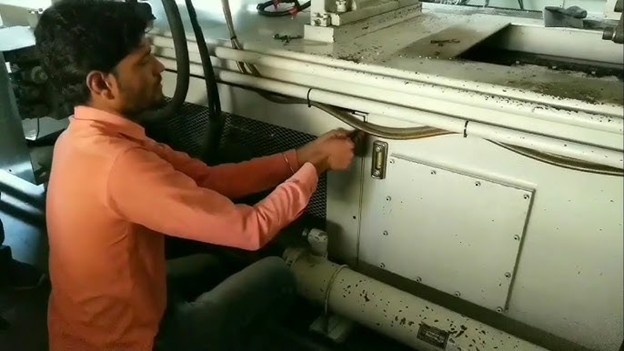
- Monitoring and Data Collection: Use advanced monitoring systems to track mold performance in real-time, allowing for early detection of issues. For example, monitoring temperature and pressure can indicate when maintenance is needed.
- Training and Skill Development: Regularly train the maintenance team on specific mold requirements and the latest techniques. This ensures technicians are equipped to handle maintenance effectively.
For example, a plastic products company that produces medical devices of high accuracy will set the maintenance checks at every 50,000 cycles. This helps to keep the molds in the best state, thus minimizing on the time taken to repair them,reducing downtime and maintaining consistent product quality.
Dos and Don’ts of Mold Maintenance
Do:
- Conduct Regular Inspections: Frequent checks can catch wear and tear early.
- Clean Molds Thoroughly: Remove residues to prevent defects in plastic components.
- Lubricate Moving Parts: This reduces friction and prevents wear.
- Use High-Quality Materials: Opt for durable materials in mold construction.
- Train Staff: Ensure your team knows the best maintenance practices.
Don’t:
- Neglect Small Issues: Small cracks or wear can quickly escalate.
- Skip Cleaning Routines: Residue build-up can cause defects and reduce mold life.
- Use Inferior Lubricants: Always choose high-quality lubricants to ensure longevity.
- Ignore Cooling Systems: Proper cooling is vital for maintaining mold integrity.
- Delay Maintenance: Sticking to a schedule prevents unexpected breakdowns.
Optimize Cooling Channels
Cooling is a critical aspect of injection mold design. Cooling channels help in cooling the mold in the right manner and in the shortest time possible thus helping in reducing the cycle times, and at the same time enhancing the quality of the final product. Cooling can also help to avoid warping and other defects in your plastic components.
A practical example can be found in the electronics industry, where molds for plastic housings require precise temperature control. Electronics often demand high precision and quality in plastic components like device housings
Optimizing cooling channel designs in these molds allows plastic companies to achieve faster cooling rates, crucial for maintaining high productivity and ensuring consistent part quality. This approach not only accelerates production but also extends the mold’s lifespan by minimizing thermal stress, aligning with industry standards for efficiency and reliability in plastic injection molding.
Implement Advanced Coatings
Applying advanced coatings to mold surfaces can significantly enhance their durability and performance. Coatings such as Titanium Nitride (TiN) or Diamond-Like Carbon (DLC) provide excellent resistance to abrasion and corrosion.
For example, in a plastic manufacturing company producing high-volume consumer goods, using TiN-coated molds can reduce wear and tear from abrasive materials, thus extending the mold’s lifespan. These coatings also improve the quality of the final plastic components by ensuring smoother surfaces and reducing friction during the injection process.
Process Improvements: Outsourcing vs. In-House Production: Cost Implications
Outsourcing versus in-house production is a critical decision that can greatly influence costs when it comes to plastic injection molding.
Exploring the Pros and Cons of Outsourcing
- Outsourcing your plastic injection molding can often lead to cost savings, especially when considering capital investment. Establishing an in-house plastic factory involves significant fixed costs such as the cost of the injection molding machines, molds, and other accessories. Also, to run and maintain these machines, you will require professional technical teams to do the job.
- Outsourcing to specialized plastic manufacturing companies on the other hand may be more cost effective. These companies already possess the equipment and expertise. By outsourcing, you can avoid the high initial costs and focus your capital on other areas of your business. Moreover, outsourcing can provide flexibility, allowing you to scale production up or down based on demand without the burden of fixed costs.
Quality Control Considerations
Quality control is a very important factor regardless of whether the process of plastic injection molding is done inhouse or outsourced. When outsourcing, it’s essential to select reputable plastic manufacturing companies that adhere to high-quality standards, such as ISO 9001:2015. To keep the quality of your plastic components high, you should make sure that your partner complies with these standards.
In-house production offers more direct control over quality. You can implement rigorous testing procedures and continuous monitoring to ensure your products meet all specifications and standards. However, this also means investing in quality control systems and training your staff, which can add to your costs. Engineering plastics used in manufacturing must meet specific performance criteria, and consistent quality checks are vital to maintain high standards.
Controlling the Costs of Logistics and Supply Chain
Logistics and supply chain management play a significant role in the cost implications of outsourcing versus in-house production. When outsourcing, you need to account for the cost of shipping raw materials to the plastic factory and the finished products back to your facility or directly to customers. These logistics costs can add up, especially if your manufacturing partner is located far from your primary market.
In-house production simplifies logistics, as everything is under one roof. You can reduce transportation costs and lead times, which can improve your overall efficiency. However, managing your supply chain internally also means dealing with inventory management, raw material procurement, and potential supply chain disruptions. Balancing these factors is crucial in determining the true cost-effectiveness of each approach.
Real-World Examples of Successful Outsourcing
Medtronic, a leading medical device company, outsourced its injection molding to Phillips-Medisize, a specialist in engineering plastics and advanced injection molding. Medtronic’s in-house production faced challenges due to outdated machinery and limited expertise in producing complex, high-precision plastic components.
Phillips-Medisize offered advanced echniques and a state-of-the-art injection molding factory with multi-cavity molds, precision temperature control, and automated inspection systems. They implemented rigorous quality control, adhering to ISO 9001:2015 standards, and optimized injection mold design to reduce cycle times and material waste.
This partnership allowed Medtronic to achieve superior product durability and safety, crucial for meeting FDA and ISO 13485:2016 standards. By outsourcing, Medtronic reduced production costs by 20%, enabling them to focus on innovation and market expansion. This collaboration ensured compliance with industry standards and provided Medtronic with a competitive edge.
Cycle Time Reduction Techniques in Injection Molding
In the fast paced world of plastic injection molding, any reduction in the cycle time can mean a huge increase in productivity and reduced cost of production. Here’s how optimizing various factors can lead to substantial improvements for plastic manufacturing companies.
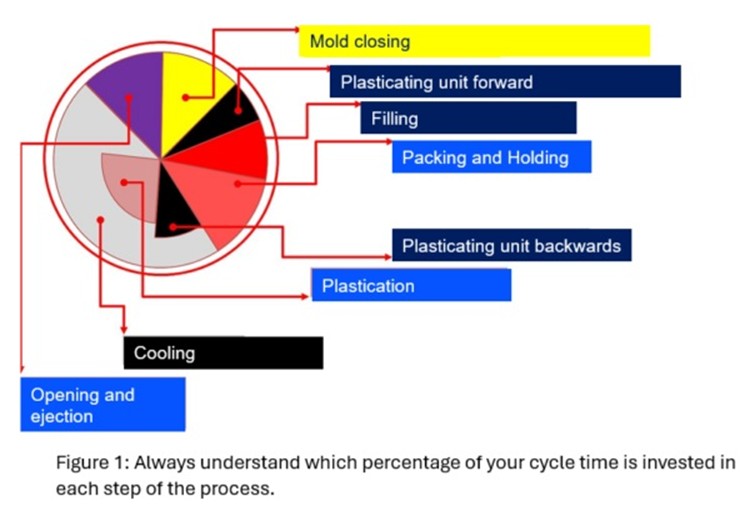
Energy Efficiency in Cooling and Heating : Proper cooling and heating are very important in reducing cycle time in plastic injection molding. By incorporating advanced injection mold design with strategically placed cooling channels and utilizing technologies like conformal cooling, a plastic factory can achieve significantly faster cooling rates. This not only shortens the total cycle time but also increases the quality of the plastic component by avoiding warping and increasing dimensional accuracy. There are standard practices such as ASTM E1867 that help in determining the right cooling systems to be used.
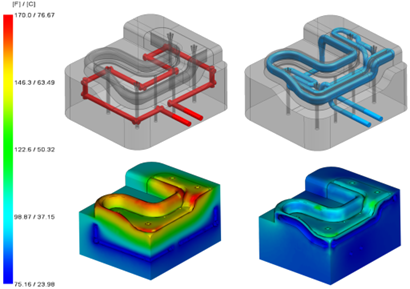
The two parameters that need to be controlled by injection molding companies are injection speed and pressure.
Machine Control:
Contemporary injection molding machines incorporate PLCs and HMIs to control injection speed, pressure, and other factors. These systems control timing and operation of injection, cooling and ejection processes. HMIs offer current values of parameters such as temperature and viscosity that can be used to set the process for quality and productivity.
Operator Expertise:
Operators input the initial conditions according to the type of material and mold design. They supervise the processes, fine-tune the parameters, and perform necessary work to avoid interruptions.
This partnership ensures increased efficiency, and quality of the plastic components.
Improving Ejection Methods
- The methods of ejection are important in order to minimize the time that takes to complete a cycle after the mold has been filled and cooled. Applying ejector pins at appropriate locations helps in easy and quick removal of the plastic component. Air ejection or hydraulic ejection systems are some of the sophisticated ejection technologies that can be adopted to reduce the cycle time even further due to the time taken to eject the part.
- Optimizing injection molding can significantly reduce costs and improve efficiency. By focusing on advanced injection mold design, selecting the right materials, and implementing precise machine control, plastic manufacturing companies can enhance productivity and quality. Proactive maintenance and leveraging operator expertise further contribute to cycle time reduction. Adopting innovative ejection methods and staying updated with industry standards helps plastic products companies remain competitive and cost-effective. Continuous process improvements ensure high-quality production and superior results in the fast-paced world of plastic manufacturing.
